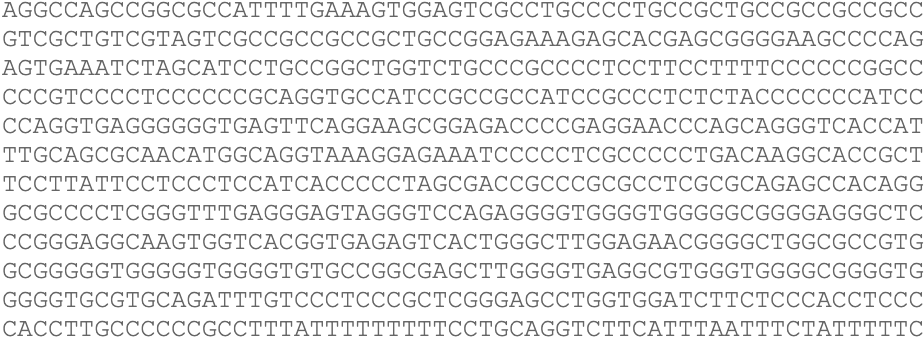Discover and read the best of Twitter Threads about #EnsemblTraining
Most recents (7)
1/ My favourite gene has 15 transcripts, which one should I use for further analysis? To report the position of variants? To design primers for? 🤯
This #tweetorial will show you how to filter and prioritise transcripts… 🧵
#genomics #bioinformatics #Ensembltraining 🧬
This #tweetorial will show you how to filter and prioritise transcripts… 🧵
#genomics #bioinformatics #Ensembltraining 🧬

2/ To start, look for the #canonical tag in the flags column of the transcript table. The canonical transcript is based on conservation, expression, concordance with @appris_cnio and @uniprot, length, clinically important variants and completeness. 

3/ Many Ensembl #canonical transcripts will also be the #MANESelect, which is our collaboration with @NCBI. These transcripts match perfectly with RefSeq transcripts, so are the best to report variant location. 

1/ Are you ready for 🎄🎅Chirstmas #Tweetorial? Whether you need the sequence for a single exon or whole #genome we got you covered! In the spirit of #Christmas, we will use Vitis vinifera 🍇 🍷in our example
#genomics #bioinformatics #Ensembltraining
#genomics #bioinformatics #Ensembltraining

2/ If you need the sequence of a single #gene, you can search for the gene symbol or ID from Ensembl homepage and click on ‘Sequence’ in the menu on the left 

1/
It’s another Thursday, and that means it’s time for another #tweetorial! Today, we want to show you how you can view RefSeq #annotations on Ensembl 🥳
#bioinf #genomics #assembly #EnsemblTraining
It’s another Thursday, and that means it’s time for another #tweetorial! Today, we want to show you how you can view RefSeq #annotations on Ensembl 🥳
#bioinf #genomics #assembly #EnsemblTraining

2/
While Ensembl gene models are annotated directly on the reference genome, #RefSeq are annotated on mRNA sequences. In other words: genome browsers will have different annotation methods, so you might be interested in comparing these annotations side-by-side 📖🤔
While Ensembl gene models are annotated directly on the reference genome, #RefSeq are annotated on mRNA sequences. In other words: genome browsers will have different annotation methods, so you might be interested in comparing these annotations side-by-side 📖🤔
3/
👂🏽You say you want to make direct comparisons of annotations between @NCBI’s RefSeq and Ensembl? Now is your time to try it out on Ensembl! 🏃🏽
👂🏽You say you want to make direct comparisons of annotations between @NCBI’s RefSeq and Ensembl? Now is your time to try it out on Ensembl! 🏃🏽
1/ You’ve sequenced your samples and identified variants. Great! 🙌
Now, here's how you can use @ensembl to find out the effect of your variants on #protein structures and interactions. A thread...🧵
#genomics #bioinformatics #tweetorial #Ensembltraining 🧬
Now, here's how you can use @ensembl to find out the effect of your variants on #protein structures and interactions. A thread...🧵
#genomics #bioinformatics #tweetorial #Ensembltraining 🧬

2/ The Variant Effect Predictor (VEP) is what you’re going to need for this task. You can find it in the blue header from the @ensembl homepage: ensembl.org/info/docs/tool…
#VEP
#VEP

3/ Click the ‘Launch VEP’ button to open the VEP web tool and enter your input data using instructions in the documentation:
👉ensembl.org/info/docs/tool…
👉ensembl.org/info/docs/tool…

1/ Do you need reference sequence files from #Ensembl? All of the different files available can be confusing. Here’s a thread to help you decide which files you need…🧵
#genomics #bioinformatics #tweetorial #Ensembltraining🧬
#genomics #bioinformatics #tweetorial #Ensembltraining🧬

2/ Whole-genome reference files for each species in Ensembl can be found on the FTP site 🧑🤝🧑🐭🐄🐶🐟
👉 ftp.ensembl.org
If you’re studying non-vertebrate species, you’ll need to use the Ensembl Genomes FTP site 🌾🦠🦟
👉 ftp.ensemblgenomes.org
👉 ftp.ensembl.org
If you’re studying non-vertebrate species, you’ll need to use the Ensembl Genomes FTP site 🌾🦠🦟
👉 ftp.ensemblgenomes.org
1/ Knowing the frequency for alleles of genomic variants in populations around the world helps us understand phenotypes and disease 🌎🌍🌏
We’re here to take you through the data in @ensembl step-by-step. A thread…🧵
#genomics #bioinformatics #tweetorial #Ensembltraining🧬
We’re here to take you through the data in @ensembl step-by-step. A thread…🧵
#genomics #bioinformatics #tweetorial #Ensembltraining🧬

2/ The way you approach this problem will depend on if you are starting with a #gene of interest or if you already have the ID (e.g rs699) of a variant for which you want to find the observed allele frequencies.
3/ If you are starting with a gene, search for the gene name or ID from the #Ensembl homepage and navigate to the Gene tab.
Want to learn about a gene function, but there’s no functional data in your species of interest? Or maybe looking for a homologue of your fav gene in a model organism to carry out functional work? Look no further! This #tweetorial will show you how to find orthologues in @ensembl 

2/14
Let’s start on the Ensembl homepage and search for our #gene of interest SCP2 by typing its name into the search box. Then go to the gene tab by clicking on the gene name in the search results.
#Ensembltraining #genomics #bioinformatics #EnsemblCompara
Let’s start on the Ensembl homepage and search for our #gene of interest SCP2 by typing its name into the search box. Then go to the gene tab by clicking on the gene name in the search results.
#Ensembltraining #genomics #bioinformatics #EnsemblCompara
3/14
You can learn more about the #gene function by exploring gene ontology terms and associated phenotypes. Let’s click on Phenotypes in the side menu. This view shows phenotypes associated with our gene of interest and variants in this gene.
You can learn more about the #gene function by exploring gene ontology terms and associated phenotypes. Let’s click on Phenotypes in the side menu. This view shows phenotypes associated with our gene of interest and variants in this gene.



